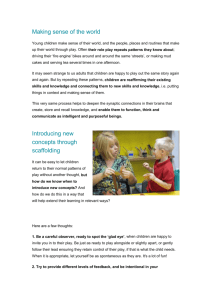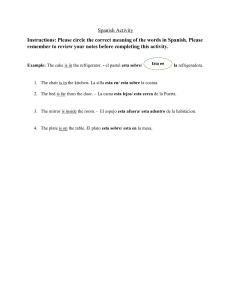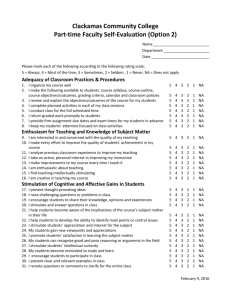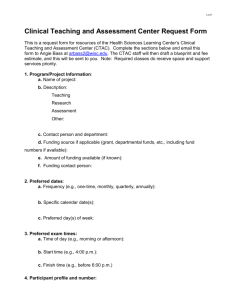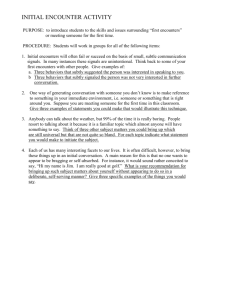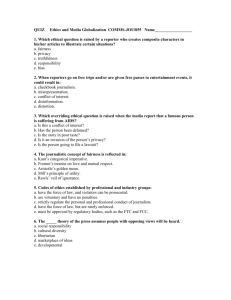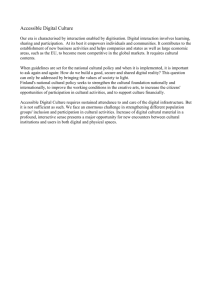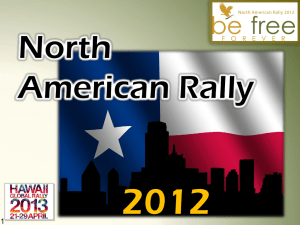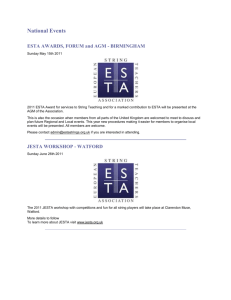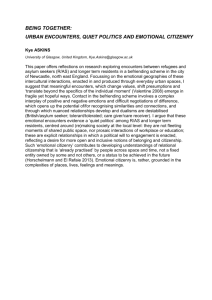Diversity in the city
advertisement
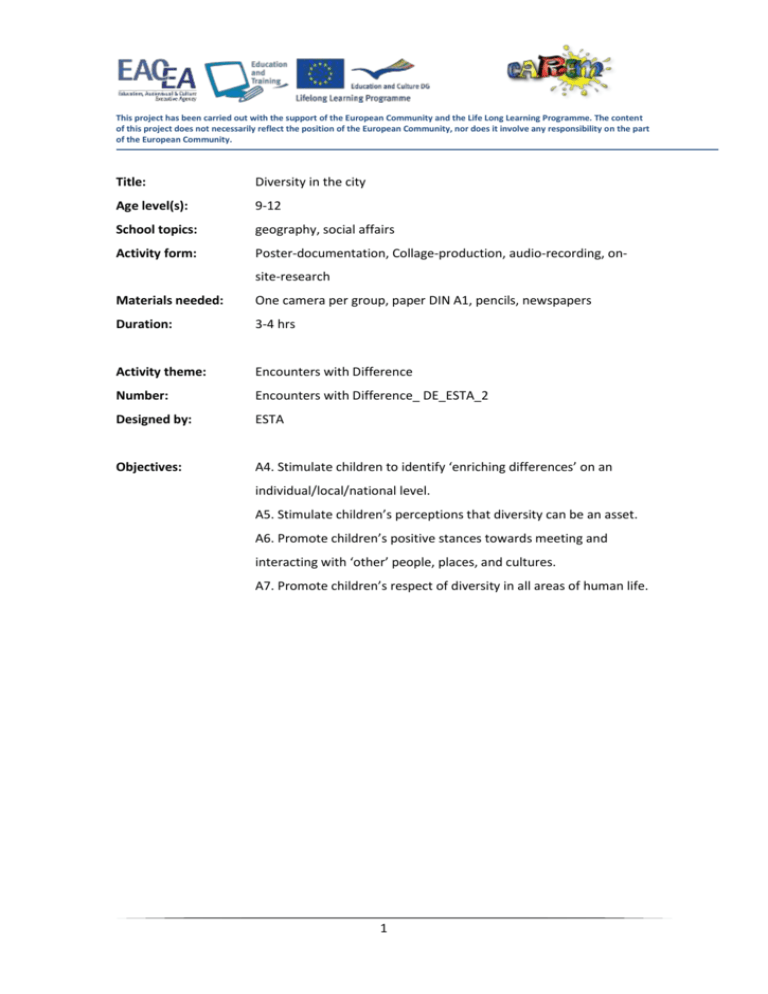
This project has been carried out with the support of the European Community and the Life Long Learning Programme. The content of this project does not necessarily reflect the position of the European Community, nor does it involve any responsibility on the part of the European Community. Title: Diversity in the city Age level(s): 9-12 School topics: geography, social affairs Activity form: Poster-documentation, Collage-production, audio-recording, onsite-research Materials needed: One camera per group, paper DIN A1, pencils, newspapers Duration: 3-4 hrs Activity theme: Encounters with Difference Number: Encounters with Difference_ DE_ESTA_2 Designed by: ESTA Objectives: A4. Stimulate children to identify ‘enriching differences’ on an individual/local/national level. A5. Stimulate children’s perceptions that diversity can be an asset. A6. Promote children’s positive stances towards meeting and interacting with ‘other’ people, places, and cultures. A7. Promote children’s respect of diversity in all areas of human life. 1 This project has been carried out with the support of the European Community and the Life Long Learning Programme. The content of this project does not necessarily reflect the position of the European Community, nor does it involve any responsibility on the part of the European Community. Description: Part 1) First activity is dedicated to explore diversity within the own city/community (rich – poor, young – old, ill – healthy…) by taking pictures. The students are split into groups and certain roles are given to he members of the groups (photographer, observer, documentarist). Pupils and teachers then choose a place/region/quarter for their work. Additionally each group has to answer the following questions with their group: what is apparent? in what meaning there exists diversity? Part 2) After the students return from their activity they prepare a poster. The pictures should be printed so that the students can stick them on the paper. Additional pictures (from newspapers, magazins…) should be added on the paper. Finally the students shall add explanatory words and descriptions on the paper, so that the final result is a collage of pictures and texts. Part 3) Finally the students shall give a presentation to the others and thus describe their piece of art. 2

